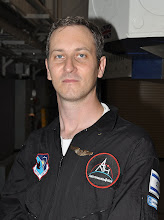 In space, you can't be wasteful. Every bit of extra weight needs to be lifted up. That entails paper, tools and even food and water. Almost the opposite seems to be happening at tradeshows. I recently did some cleaning up of my office at work. Among the items I got rid of were about 2 lbs of flyers, magazines and CDs I got at a couple of trade shows I went to as a part of my job. In software engineering things move (note I didn't say progress...) very fast, and what describes the latest and greatest component or contains a demo of a new release soon becomes stale and outdated.
In space, you can't be wasteful. Every bit of extra weight needs to be lifted up. That entails paper, tools and even food and water. Almost the opposite seems to be happening at tradeshows. I recently did some cleaning up of my office at work. Among the items I got rid of were about 2 lbs of flyers, magazines and CDs I got at a couple of trade shows I went to as a part of my job. In software engineering things move (note I didn't say progress...) very fast, and what describes the latest and greatest component or contains a demo of a new release soon becomes stale and outdated. So here's a simple idea I hope Microsoft, Google or any other company would pick up - the paperless tradeshow. It's a tradeshow without any paper (or any other write-once, read-many media such as CDs or DVDs). Oh, but we love the shiny brochures you say? What do you do with them when you get back from the tradeshow? What do you ever use them for if not as links to online resources? I'm sure you can live without those colorful paper airplanes and find something else to use as a coaster.








 Space Shuttle Launch Poll Results
Space Shuttle Launch Poll Results











